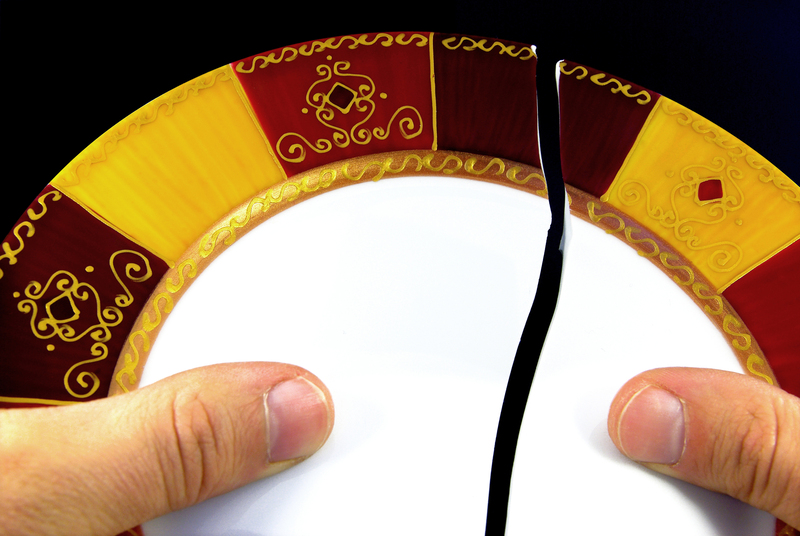Proven Techniques for Moving Mattresses and Beds Without Hassle
Moving homes involves a multitude of challenges, but relocating large, cumbersome items like mattresses and beds can often prove to be the biggest headache. Without the right strategies, you risk damaging your furniture, injuring yourself, or simply turning an exciting move into a frustrating ordeal. Thankfully, with a few proven techniques and a clear plan, moving mattresses and beds can be smooth, efficient, and even satisfying.
This comprehensive guide explores everything you need to know about transporting mattresses and bed frames with minimal stress. Whether you're handling a twin-size mattress or a spacious king bed, these expert tips will ensure your move is as hassle-free as possible.

Why Smart Techniques Matter for Moving Mattresses and Beds
Mattresses and beds aren't just awkward and heavy--they're also expensive and essential for your daily comfort. Damaging your mattress during a move can lead to costly replacements or, worse, sleepless nights in your new home. Using the best practices for moving beds and mattresses not only protects your investment but also safeguards your health by reducing the risk of strain or accidents.
Key Challenges When Moving Beds and Mattresses
- Size and weight make maneuvering difficult
- Fragility--can be damaged by bending, water, or rough handling
- Sanitation concerns from exposing mattresses to dirt or contamination
- Need for safe lifting and moving techniques to avoid physical injury
Essential Preparations: What to Do Before Moving Your Mattress or Bed
An organized move starts with preparation. Here are the most important steps to take before you attempt to lift or transport your mattress and bed frame:
1. Gather the Right Supplies
- Mattress bag or cover: Protects against dirt, moisture, and tears.
- Moving straps: Make carrying easier and more secure.
- Furniture dollies: Especially helpful for heavier beds or moving mattresses down hallways.
- Disassembly tools: A set of screwdrivers or a wrench for taking apart bed frames.
- Tape and markers: For labeling and securing loose parts.
- Bubble wrap or moving blankets: To cushion delicate or sharp-edged components.
2. Clean Your Mattress and Bed Components
Take the opportunity to clean your mattress before moving it. Vacuum, spot clean, and allow to dry. Clean and dust your bed frame and any hardware. This minimizes the transfer of dust, bugs, or allergens into your new home.
3. Disassemble the Bed Frame Properly
Moving a bed is far easier when it's in parts. Remove the mattress and box spring first. Next, fully dismantle the bed frame, headboard, and footboard. Keep all screws, bolts, and small components in a labeled bag and tape the bag to a large frame piece, so nothing is lost in transit.
Step-by-Step Techniques for Moving a Mattress Without Hassle
1. Wrap Your Mattress Securely
The number one secret to keeping your mattress sale-ready and hygienic during a move is using a mattress bag. These protective covers shield against dirt, rain, pests, and accidental tears or stains.
- Choose a strong, thick plastic mattress bag that matches your mattress size (twin, full, queen, king, etc.).
- Slide the mattress inside the bag with help if possible; this prevents rips and makes sealing easier.
- Seal with packing tape to ensure a snug fit and maximum protection.
If no commercial bag is available, use old blankets or linens, but be aware they'll provide less comprehensive protection than a purpose-built bag.
2. Moving Mattresses Safely: Methods and Pro Tips
- Enlist a helper: Mattresses are awkward for one person, even if not excessively heavy. Two people greatly reduce the risk of trouble or injury.
- Bend and flex carefully: Some mattresses (especially foam) are somewhat flexible, but avoid folding them tightly. Excess bending can destroy supportive structure and void warranties.
- Use moving straps or handles: Many mattress bags have built-in handles for easier gripping. Otherwise, use a moving strap positioned under the mattress for more leverage over long or winding hallways.
- Go slowly around corners: Mattresses can catch on doorframes or walls. Angle the mattress and maneuver gently to prevent tearing or damage to both the mattress and your walls.
- Use a furniture dolly: For especially bulky or heavy mattresses, a flat dolly with wheels takes the strain off your back and makes maneuvering far easier.
3. Safe Handling Techniques for Stairs and Elevators
- For stairs: Always have one person above and one person below, keeping the mattress upright on its narrowest edge. Communicate clearly to coordinate turns.
- For elevators: Check elevators in advance for size and availability. Most standard elevators can accommodate a queen-size mattress upright, but king mattresses may require partial folding or scheduling a service elevator.
Moving Bed Frames and Box Springs: Hassle-Free Guidance
1. Disassembly Is Key
No matter your bed frame's style--platform, bunk, metal, or wooden--it's much easier to move when taken apart. Take photos during disassembly if possible, so reassembly is a breeze later.
- Remove slats, support beams, and any decor pieces.
- Use resealable plastic bags for bolts, screws, and small pieces. Label them for each part or step of the bed frame.
- Wrap wooden or painted pieces in furniture blankets to prevent nicks, chips, or scratches in transit.
2. Protecting Bed Components
Box springs, like mattresses, should be covered in plastic or cloth bags to safeguard fabric and prevent water or dust contamination. Headboards, especially if upholstered or carved, deserve extra padding with moving blankets and bubble wrap.
3. Moving Large or Unique Beds
- Adjustable beds: Always unplug electronics and secure all motors before moving. Many models can be separated into base and mattress parts--consult the manufacturer if unsure.
- Bunk beds: Disassemble into individual twin frames where possible. Secure ladders and guardrails separately.
- Antique or custom beds: Always wrap delicately, and consider professional help for irreplaceable items.
Loading and Transporting Mattresses and Beds: Master the Move
1. Loading Mattresses Into a Moving Truck or Vehicle
- Place mattresses upright, on their long edges against the wall of the truck. This conserves space and prevents undue pressure on springs or foam layers.
- Never stack heavy items on top. Excess weight can deform or damage the internal structure of your mattress.
- Use securing straps to keep both mattresses and bed frames from slipping or sliding in transit.
- Protect against weather by double-checking that the truck or van is dry and leak-free before loading.
2. Moving Mattresses in Smaller Vehicles
If you don't have a moving truck and plan to use a van, SUV, or even the roof of your car, take extra precautions.
- Measure first: Know the exact dimensions of your mattress and the available space in your vehicle.
- For rooftop transport: Only use this method if absolutely necessary. Place the mattress flat, secure tightly with ratchet straps, and drive slowly--never use twine or weak rope, as mattresses can easily blow away.
- Keep the mattress dry: Rain or highway grit can ruin a mattress. A high-quality mattress bag is essential for vehicle-top moves.
3. Unloading and Setting Up in Your New Space
Reverse your moving route when unloading. Bring in bed frames first so you can assemble the structure and support your mattress immediately. Gently remove the mattress bag and inspect for any accidental damage.
Allow your mattress time to "breathe" before making the bed--this helps any odors from storage dissipate and re-inflates foam varieties compressed during the move.
Troubleshooting Common Problems When Moving Mattresses and Beds
1. Handling Tight Spaces and Small Doors
- Angle for leverage: Most mattresses will fit through standard doors when angled upright.
- Measure first: Check door widths, stairwell turning radii, and elevator dimensions prior to moving day.
- Remove doors temporarily: In tight situations, popping a door off its hinges for a few minutes can provide crucial extra inches.
2. Dealing With Mattress Damage
- Surface dirt: Wipe with a damp cloth and mild soap.
- Minor tears: Patch using fabric glue and a mattress patch kit, or contact the manufacturer for advice.
- Severe sagging or soaking: Consult professionals--damaged mattresses can harbor mold and should not be used.
Choosing Professional Mattress and Bed Moving Services
Sometimes, even with best efforts, moving your mattress and bed without professional help isn't practical. If you're facing long-distance moves, stairs without elevators, extra-large beds, or if you have physical limitations, hiring experienced mattress movers can be a wise investment.
Benefits of Hiring Specialists
- Expert packing and handling reduces risk of damage
- Appropriate equipment and vehicles ensure safe, efficient transit
- Insurance and liability protection for peace of mind
- Saves time and hassle, especially for complex moves
How to Choose a Good Mattress Moving Company
- Check reviews and credentials (insured, licensed, experienced staff)
- Request detailed, itemized quotes and ask about mattress-specific policies
- Inquire about climate-controlled trucks for long-distance or special mattress types
- Ask about guarantees for assembly/disassembly at your new home

FAQs About Moving Mattresses and Beds
-
Can I fold my mattress to move it?
Memory foam and latex mattresses may allow some flex, but traditional innerspring and hybrid beds can be damaged by folding. Try to keep mattresses as flat as possible. -
What's the easiest way to move a mattress alone?
Use a mattress bag with handles and a furniture dolly. Slide carefully and avoid lifting alone if at all possible. -
Should I move my mattress in the rain?
Avoid it when possible, as water can ruin the material and encourage mold. If you must move in wet weather, use a waterproof mattress bag and dry the mattress thoroughly upon arrival. -
How do I store a mattress during the move?
Always store upright, in a dry, ventilated area, and tightly sealed in a protective bag to keep out pests and moisture.
Conclusion: Moving Beds and Mattresses the Easy Way
With the right preparation, tools, and proven mattress-moving techniques, even the bulkiest bed becomes manageable. Prioritize cleanliness, smart disassembly, and protective covering. Always enlist help for carrying, and use proper moving equipment to preserve your mattress's comfort and longevity. Whether you DIY or hire pros, following these expert-backed steps ensures hassle-free mattress and bed moves so you can settle into your new home comfortably and worry-free.
Ready for a smooth transition? Put these strategies into action and discover how straightforward moving your mattress and bed can truly be.



